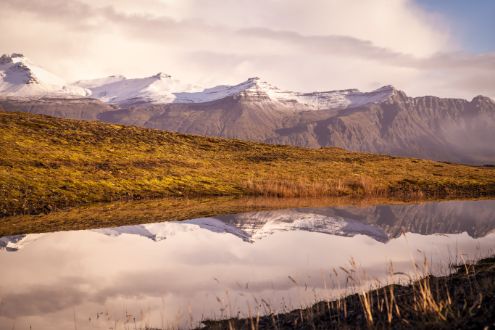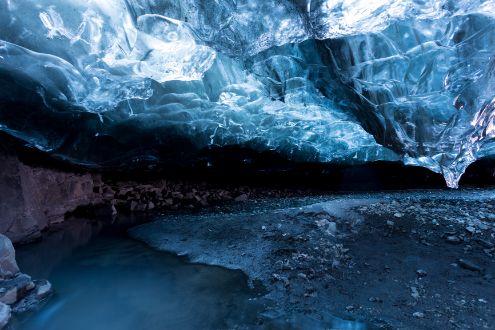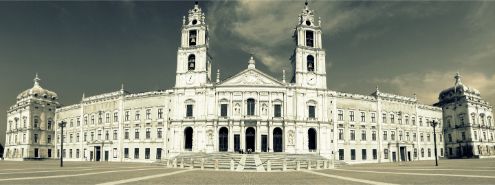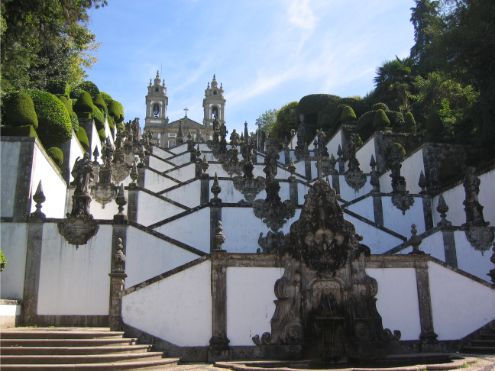Following the World Heritage Committee’s conference in July 2019, seven new sites in Europe have been inscribed onto UNESCO’s list to ensure these locations of natural and cultural importance are conserved. Why not incorporate a visit to one of these on your next holiday?
Vatnajökull National Park, Iceland

Image Credit: Andrés Nieto Porras
This stunning volcanic region covers nearly 14% of Iceland and includes ten central volcanoes, eight of which are subglacial. The jökulhlaup - a sudden flood caused by the breach of a glacier during an eruption - has brought about some unique sandur plains, river systems, and canyons.
Skaftafell has a scenic landscape with a selection of hiking trails for those who enjoy outdoor activities - short trails lead to the Svartifoss waterfall and Skaftafellsjökull glacier, and the area serves as a base camp for those wishing to climb Iceland’s highest mountain peak, Hvannadalshnjúkur.
Jökulsárgljúfur is the most northerly part of this National Park, connected to the rest of the park by a glacial river. The site is made up of a 25km long canyon which is 100-120m deep in places and has a series of waterfalls (Selfoss, Dettifoss, Hafragilsfoss and Réttarfoss).
The highlands north of Vatnajökull are an active volcanic zone, ever evolving thanks to natural geological activity. The Ódáðahraun desert has unusual formations, sands, and broad lava fields; it has typically been avoided by Icelanders for their stories of natural and supernatural phenomena. Notable features include the deep lake formed when the Askja magma chamber collapsed, the Herðubreiðarlindir and Grafarlönd oases created by springs flowing under lava fields, and the Kverkfjöll central volcano with calderas filled with glacial ice.
It’s recommended that visitors look at the weather conditions and advice before exploring some of the trickier to reach areas of the National Park.

Image Credit: David Phan
Royal Building of Mafra, Portugal

Image Credit: Mauro De Carvalho
This impressive 18th century structure can be found 30km to the north west of Lisbon, and its classification in the UNESCO list includes the palace, basilica, convent, cerco garden, and game reserve. The Mafra building was one of the most remarkable undertakings of King João V, and illustrates the power and reach of the Portuguese Empire through its Roman and Italian baroque architectural styles.
In the palace, the north turret was occupied by the king, and the south by the queen; these areas are linked by a 232-metre gallery, making it Europe’s largest palatial corridor. The Franciscan convent once housed 300 friars. The basilica has six organs, 98 bells, and the collection of sculptures contains works by almost every major Roman sculptor of the period. The library within the palace itself contains over 36,000 leather-bound books, protected from insect damage by its own colony of bats!
The magnificent buildings are well worth the bus excursion from Lisbon, especially given its reasonable entry fee of just €6 for adults and €3 for seniors.
Sanctuary of Bom Jesus do Monte in Braga, Portugal

Image Credit: karaian
The Bom Jesus overlooks the city of Braga; an 18th century church crowns the top of a sacred mount, which has been a religious site since the 14th century. A Baroque zigzag pathway leads up the western slope and includes a series of chapels, fountains, sculptures, and gardens.
The ever-flowing fountains found on the staircase landings are dedicated to each of the senses, and there are a series of life-size dioramas depicting the days before Christ’s crucifixion.
The 577 steps leading up to the church are often climbed by tourists or pilgrims on foot or knee. For those who’d rather ascend or descend without expelling too much energy, a funicular is a delightful way to visit the sanctuary. The car itself was built in 1882 and continues to be entirely powered by water to this day. For just €1, visitors can travel the slope in just three minutes.
Title Image Credit: Vitor Oliveira (Image Cropped)